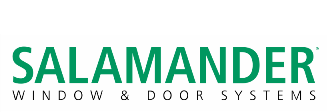Protecting Art’s Future: European Fine Art Insurance Market Thrives Post-Pandemic
European Fine Art Insurance Market to Reach €694.3 Million by 2027
Post-Pandemic Resilience, Rising Art Valuations, and Digital Innovation Drive Market Expansion Across Europe
The European fine art insurance market is projected to grow steadily over the next three years, with premium volumes rising from €620.9 million in 2024 to €694.3 million…
Protecting Art’s Future: European Fine Art Insurance Market Thrives Post-Pandemic
European Fine Art Insurance Market to Reach €694.3 Million by 2027
Post-Pandemic Resilience, Rising Art Valuations, and Digital Innovation Drive Market Expansion Across Europe
The European fine art insurance market is projected to grow steadily over the next three years, with premium volumes rising from €620.9 million in 2024 to €694.3 million by 2027, representing a compound annual growth rate (CAGR) of 3.8%. At the same time, the number of contracts is expected to climb from 242,000 in 2024 to 260,782 by 2027 (CAGR: 2.4%), according to the latest market report by Interconnection Consulting.
This growth reflects the art world’s recovery following the challenges of the COVID-19 pandemic, combined with rising valuations of fine art and increasing interest from both affluent private collectors and cultural institutions. Temporary insurance policies for exhibitions, loans, and international transport are becoming increasingly vital as art becomes more mobile and interconnected across global markets. Europe remains at the forefront of fine art insurance, with key regions like the United Kingdom, Germany, Switzerland, France, and Austria playing significant roles in shaping the industry’s trajectory.
Market Dynamics: A Recovery Driven by Innovation and Demand
The resurgence of the art market post-pandemic has been a significant catalyst for growth. Galleries, museums, and exhibitions across Europe have reopened with renewed vigor, driving demand for flexible insurance solutions that can adapt to temporary needs. At the same time, art valuations continue to rise, fueled by record-breaking auction results and increased investment in art as a valuable asset class. This dual trend—resurgent activity and escalating art values—has led to a growing demand for comprehensive and bespoke insurance policies.
A notable shift within the industry is the increasing preference for temporary policies, particularly among museums and cultural institutions. These policies offer short-term coverage for events like exhibitions, art loans, and transportation, catering to the growing mobility of artwork across international markets. This demand is particularly prominent in Germany and Austria, where collectors and institutions alike are seeking coverage that aligns with the dynamic movement of art.
Meanwhile, digital innovation is redefining the market, particularly in France, which has emerged as a leader in insurance for digital art and NFTs. Policies tailored to the unique risks of digital assets—such as cyber theft, forgery, and data loss—are attracting younger, tech-savvy collectors who are reshaping traditional collecting behavior. This shift highlights an evolving market where insurers are responding to new trends with creative and innovative solutions.
Despite these advancements, significant challenges remain. In countries like France, many collectors still bundle their valuable artworks into household insurance policies due to misconceptions about fiscal reporting. This practice leaves a vast portion of the art market underinsured, exposing valuable assets to unnecessary risk. Bridging this education gap and raising awareness about the benefits of specialized art insurance is crucial for the market’s future growth.
Regional Overview: Diverse Markets, Shared Resilience
Each European market presents unique dynamics while collectively contributing to the region’s leadership in fine art insurance.
The United Kingdom remains the largest and most segmented market, with its retail and wholesale structures thriving under a post-Brexit regulatory environment. High-value collectors in the UK continue to drive demand for policies tailored to complex and high-risk assets.
In the DACH region, Germany leads with a market value, accounting for 22% of Europe’s total premium volume. The German market is dominated by combined policies that cover both art and household valuables, a reflection of conservative insurance habits among private collectors. However, there is noticeable growth in temporary policies, particularly for galleries and exhibitions, driven by the post-pandemic resurgence of cultural activity.
Switzerland offers a more conservative yet stable approach, with a market valued at €65 million. Swiss private collectors are increasingly opting for tailored standalone art policies to better protect their high-value assets, while institutions favor temporary coverage for artworks on loan. Events like Art Basel continue to bolster Switzerland’s reputation as a global hub for fine art.
In France, the market is driven by innovation, particularly in the realm of digital art insurance. Paris, as a leading international art center, fosters strong demand for temporary policies supporting exhibitions and loans. French insurers are pioneering solutions for NFTs and other digital artworks, a trend that is reshaping the future of fine art insurance.
Austria, though smaller in market size, remains stable and reliable. Premium volumes are expected to grow by 6.1% in 2024. Permanent policies currently dominate, but there is increasing demand for temporary solutions as the mobility of art through loans and exhibitions rises.
The Role of Brokers and Market Leaders
Brokers remain the backbone of the fine art insurance industry, particularly in Germany, where they handle 95% of policies. Across Europe, brokers manage the complexities of art insurance, providing invaluable expertise to private collectors and institutions navigating bespoke and high-value coverage.
The industry continues to attract new players eager to capitalize on the lucrative fine art insurance market. Generali Insurance Group, for example, has expanded its offerings to Austria and the UK following successful operations in Germany. This growing competition, alongside established insurers like Allianz, AXA, Helvetia, Chubb, UNIQA, and Hiscox, is driving innovation and enhancing service quality across the market.
Looking Ahead: Opportunities and Challenges
The European fine art insurance market stands at the intersection of growth, innovation, and evolving risks. Cybersecurity challenges, including the risk of theft and forgery in digital art, are prompting insurers to offer specialized solutions. Similarly, climate adaptation is becoming increasingly important as extreme weather events threaten physical artworks. Insurers who innovate to address these risks will be well-positioned for success.
At the same time, raising awareness about the value of fine art insurance remains a priority. Many collectors remain unaware of the risks of underinsurance, particularly when relying on general household policies. Continued education efforts will be essential to ensuring that Europe’s rich art heritage is adequately protected.
“The European fine art insurance market is experiencing a period of resilience and transformation,” said Allison Carranza, Market Analyst at Interconnection Consulting. “With rising art values, digital innovation, and growing temporary coverage needs, insurers are well-positioned to meet the demands of an evolving market.”
For More Information or Access to the Full Report
Contact:
Interconnection Consulting
Allison Carranza | Market Analyst
Tel: +43 1 585 46 23 – 50
Email: carranza@interconnectionconsulting.com
About Interconnection Consulting
Interconnection Consulting has been a trusted provider of market intelligence since 1998, delivering actionable insights and data-driven analysis to empower businesses across industries.
Renovation Keeps Raised Floors Afloat Amid Market Contraction
The European raised floor panel market, which performed steadily during the COVID-19 pandemic, is currently facing a slowdown due to decreased construction activities. Despite a slight decline of 0.5% in 2024, the market has shown resilience, particularly in renovation projects. The renovation segment has surged by 15.5% since 2020, while new constructions lag…
Renovation Keeps Raised Floors Afloat Amid Market Contraction
The European raised floor panel market, which performed steadily during the COVID-19 pandemic, is currently facing a slowdown due to decreased construction activities. Despite a slight decline of 0.5% in 2024, the market has shown resilience, particularly in renovation projects. The renovation segment has surged by 15.5% since 2020, while new constructions lag behind. Germany leads with a 26.3% market share, though Spain and the UK are expected to perform best in 2024.
Wood and Mineral Panels: The Go-To for Premium Solutions
Wood and mineral panels dominate the European market, holding substantial shares in France, Spain, and Benelux. Wood panels, already the biggest segment in these regions, are expected to continue growing. Mineral panels remain the second most popular, particularly in Italy and Germany, despite a slight dip due to raw material shortages. Encapsulated steel panels, although underperforming in the UK, are gaining ground in other areas.
Rising Data Centers and Changing Construction Trends
Data centers are driving market growth, with a forecasted annual increase of 3.5% until 2027. This surge counters the decline in the office segment, impacted by the rise in remote work and coworking spaces. The rapid expansion of cloud services, increased data consumption, and the push for digital transformation are fueling the need for more data centers. Public investments in healthcare and education are anticipated to mitigate some of the losses in the coming years. The stabilization in material prices and rising interest rates hint at modest price increases in the coming years.
Dominance of Key Industry Players
The raised floor panel market is led by prominent companies such as Lindner (Germany), Kingspan (UK), Mero (Germany), Gamma Industries (France), and Nesite (Italy), which together hold a significant market share of around 48%. These industry leaders drive the market through strategic innovations and acquisitions, shaping the competitive landscape.
[^]

























